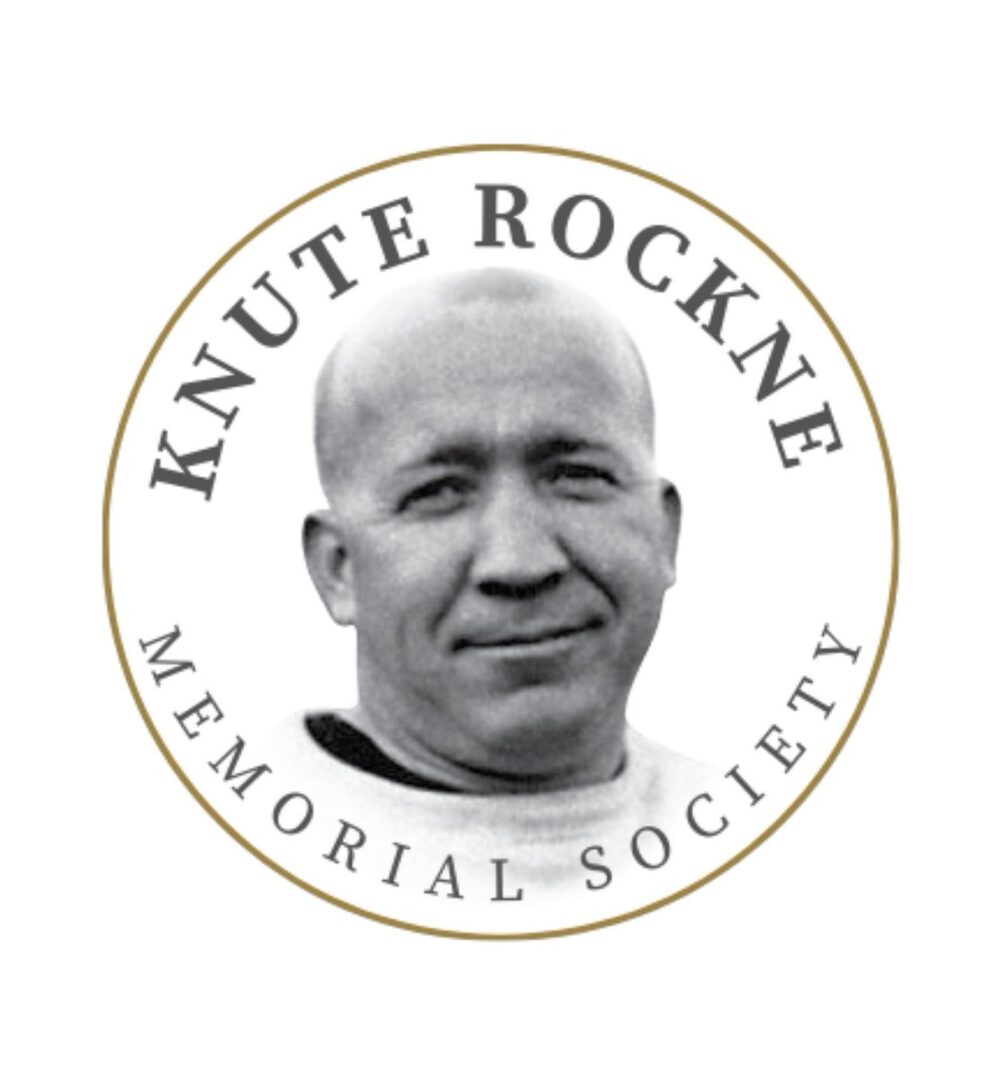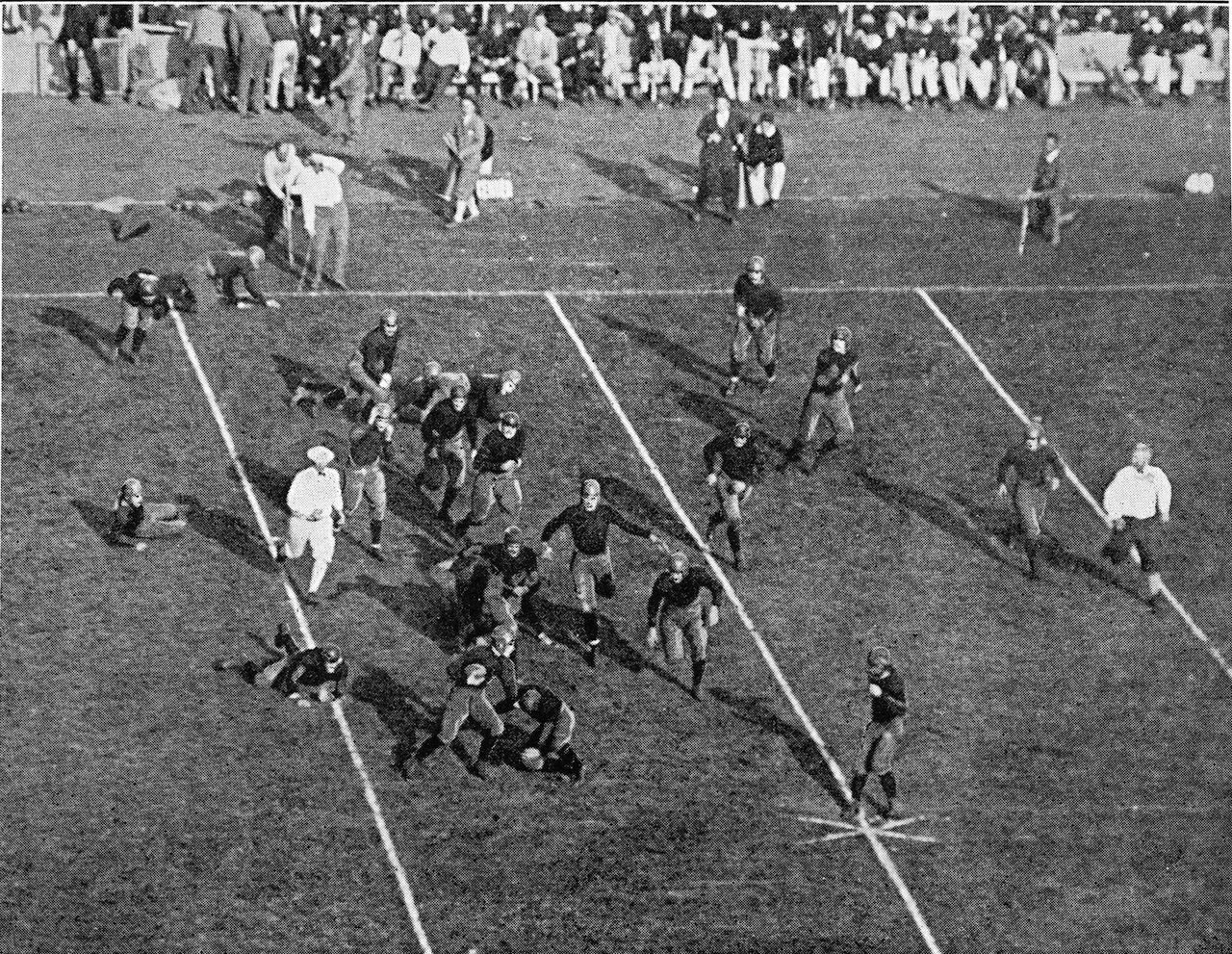A century ago this fall, the Irish made a trip East that was monumental at the time, to meet college football blueblood and defending national champion Princeton. The Tigers had played in the first game in the history of the sport in 1869 and had never strayed from the top echelon of the game in the decades that followed.
Their 1922 championship was the 25th national title for the school. It included a thrilling 21-18 comeback victory over Amos Alonzo Stagg’s University of Chicago Maroons in a titanic battle of “East vs. West”—the first-ever football game broadcast nationally on radio. The Tigers also topped Big Three rivals Harvard, 10-3, and Yale, 3-0, in front of crowds exceeding 50,000.
It was a huge scheduling coup when athletic director Knute Rockne secured a game with the Tigers for Oct. 20, 1923, at Palmer Stadium. For a $5,000 guarantee, but no split of the expected large gate, the Irish would get to take on a bedrock of the Ivy League and Protestant establishment—a major boon to Notre Dame’s national prestige, school officials felt.
The timing wasn’t ideal, though. The date that Princeton was available—October 20 —would come just one week after Notre Dame was scheduled to play Army at Brooklyn’s Ebbetts Field. And rather than allow the team to spend the intervening days in the New York/New Jersey area, the powers that be at ND insisted Rockne’s men return to campus for three days of in-person classes before turning around and heading back East.
It would seem impossible to get ready for such a major challenge in that time frame. But, it turned out, Rockne had his men well-prepared to take on Coach Bill Roper’s vaunted Tigers. The wily Irish coach had seen to that in the spring of 1923. Rockne respected his other major 1923 opponents such as Army, Georgia Tech and Nebraska. But, from spring practice on, he made it clear Princeton was the game to win. Whenever he made a point about a tactical issue, the opponent would be Princeton.
Every day during spring practice, Rockne conducted a half-hour lecture in a classroom in the Main Building. One week, he decided to guide his players through a mythical game with the Tigers, describing the conditions: who had the ball and where, the down, yards to go, the wind conditions, time left to play, what type of defense was shown. He would ask someone in the class to call the play. The coach would then decide the result of the play, based on whether or not he agreed with the call.
In this way, he kept every team member sharp with an outlook on all the aspects that played into the game. Rockne knew enough of Princeton’s system, players and tendencies, that he was using the exercise to prepare the Irish for what they were likely to face in late October at Palmer Stadium.
When the time came, the Irish headed to Princeton weary of train travel, yet energized by their 13-0 triumph over Army a week earlier. Aside from a punt blocked into the ND end zone for a safety, the day belonged to Rockne’s men. Don Miller and Jim Crowley, in particular, ran wild, as Notre Dame set off on one long drive after another. The Irish rolled up an astounding 455 yards from scrimmage to Princeton’s 95. They piled up 28 first downs to the Tigers’ 4.
The Irish did most of their damage on the ground. One reporter noted that, “Roper sent man after man into the line hoping to solve the mystery attack that marched down the field with all the majesty of an Atlantic liner and speed of the Century. Notre Dame rolled on with her straight football tactics, distaining to take the aerial route for two or three other touchdowns that might have been had for the asking.”
One writer described the Notre Dame attack this way: “Its backfield shift was the true poetry of motion. There was no lost energy, no halting, nor stumbling. Every man was assigned to a particular task and every man took care of his job. Its attack was a knifing attack. Its interference formed in a flash and the runner never came out from behind it.”
Notre Dame’s defense was just as stout, and finished the afternoon when Elmer Layden intercepted a pass at midfield and “breezed the distance through the entire Tiger team to score standing up.”
Final score: Notre Dame 25, Princeton 2. “One of the worst trouncings in the history of Nassau,” one report noted.
The major Eastern press was unanimous in their praise for the Irish:
- “Six touchdowns and 38 points against the Army and Princeton on successive Saturdays has been one of the leading football triumphs of many seasons.”
- “Rockne’s wizards attack relentlessly, they were thorough, superb.”
- “The brainiest, fastest, fightingest football outfit throughout the length and breadth of these United States.”
- “We want to pay tribute to the clean playing of the Notre Dame eleven, no member of which forgot the code of the game in the heat of the conflict. The glory of the victory is fleeting, but good s sportsmanship leaves an indelible mark on the pages of time.”
The Irish had gained the attention of the football world.

